Week 30 Preparedness Challenge
During major disasters water mains and sewage lines may break and disrupt the sewage system. When that happens, inadequate sanitation and hygiene can be deadlier than the disaster itself, causing disease and lethal epidemics. The preparedness challenge this week is not much fun to think about, but it’s a vital part of being prepared. The challenge is to make sure you have a good way to dispose of human waste. Here are several options to choose from.
This week choose an option for taking care of sanitation in an emergency, and purchase the needed supplies.
What Are Some Short-Term Options for Human Waste Disposal?
OPTION 1—MODIFY AN EXISTING TOILET
The first solution is to improvise using your existing toilet. The advantage of using your regular toilet is that it is familiar and comfortable to sit on. The disadvantage is that you will have odorous waste accumulating in or near your living space.
Needed Supplies
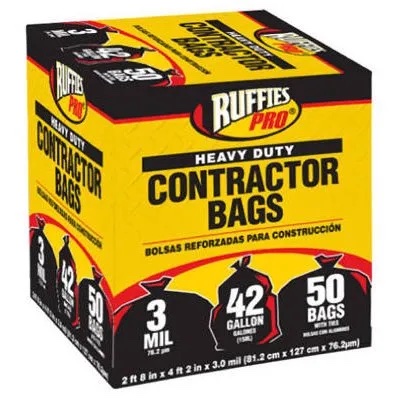
- Heavy duty garbage bags, preferably 3 mil or heavier
- Kitty litter, at least two bags
- Duct tape
To use an existing toilet, begin by disconnecting the flush lever or otherwise restraining it to avoid inadvertent flushing. Also, turn off water to the toilet. Next, line the toilet bowl with a heavy-duty disposable garbage bag—Look for 3 mil contractor trash bags in a store like Home Depot. Most “heavy-duty” garbage bags at the grocery store are only about .9 mil and not strong enough. You don’t want a bag to break!
After lining the toilet bowl, fold the bag over the outside of the toilet. Duct tape around the outside of the toilet to make it secure and lower the toilet seat to help keep it in place.
Use kitty litter to absorb the liquid waste and help deodorize the solid waste. Kitty litter is primarily made from absorbent clay and is inexpensive and easy to purchase. Place a half-cup of kitty litter in the bottom of the garbage bag and sprinkle about a half-cup of kitty litter each time someone uses the toilet.
Securely close the bag and remove the waste material to an outside garbage can. Obviously, this is a short-term solution. At some point you will need to figure out a way to dispose of the waste material accumulating in the garbage can.
OPTION 2—IMPROVISE WITH A FIVE-GALLON BUCKET OR CAN
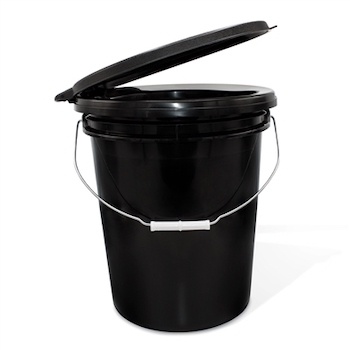
Use a sturdy five-gallon plastic bucket or paint can with a tight-fitting lid and fitted with a toilet seat to make an improvised toilet. The advantage to this option is that the container can be placed in a garage or shed, away from your living space. The disadvantage is that it may not be as comfortable, and you have to be careful to prevent it from tipping over.
Needed Supplies
- Large 5- or 6-gallon bucket
- Toilet seat
- Heavy-duty garbage bags, preferably 3 mil or heavier
- Kitty litter, at least two bags
- Duct tape
Follow the same process as described in Option 1, using heavy-duty 3 mil contractor trash bags to line the bucket and kitty litter to contain liquid waste and help with odor.
OPTION 3—PURCHASE A PORTABLE TOILET
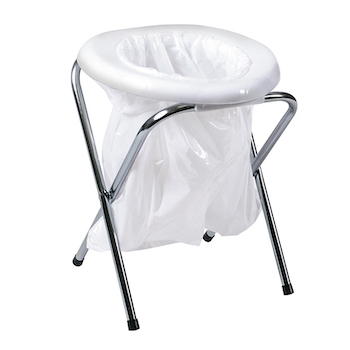
A simple portable toilet is a possible solution for short-term human waste disposal. The simplest portable toilets use removable plastic bags. You will need chemicals recommended by the manufacturer, including solidifying polymers, decomposing enzymes, and disinfectants along with a supply of plastic waste bags.
Other portable toilets have built-in holding tanks which use decomposing chemicals and deodorizers. Follow the directions for your brand of portable toilet. You will eventually have to empty it so plan how you will take care of that task.
Needed Supplies
- A portable toilet of your choice
- Removable plastic bags
- Manufacture recommended chemicals for sanitizing
Single-Use Toilet Bags
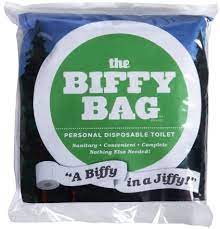
Single-use toilet bags are another option for containing and disposing of waste. Although designed for use in the outdoors, they are also useful for emergency preparedness. They usually consist of an inner bag for containing the waste and a puncture-proof outer bag. They contain polymers that absorb moisture.
Disinfecting Gels Instead of Kitty Litter
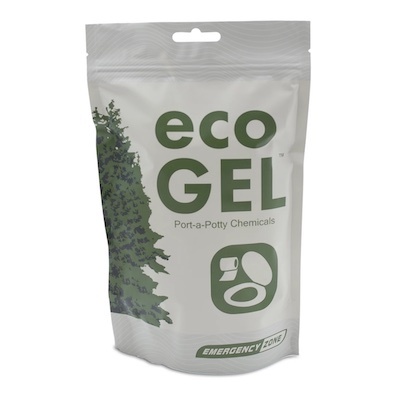
Disinfecting gels are an alternative to kitty litter. There are several brands to choose from, but they all have an absorbent gel base and a deodorizing ingredient. Check out these–Eco Gel, Poesie Poo Gel, Neptten Biodegradable Toilet Powder, Poo Powder.
Using Lime to Decontaminate Human Waste
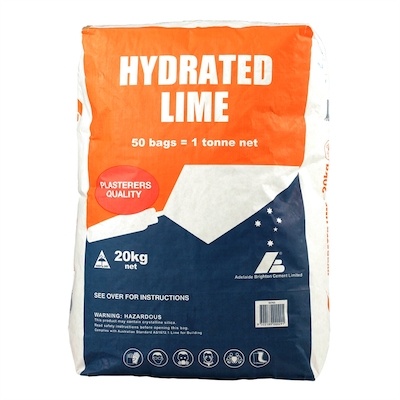
Lime—the chemical name is calcium hydroxide—is another important chemical for decontaminating human waste and for controlling odors in latrines and outhouses. It effectively kills the pathogens in solid wastes by controlling the environment needed for their growth by both altering the pH and increasing the temperature. It absorbs liquids, reduces odors, and discourages flies and other insects.
Store bags of lime in an airtight and watertight container in a cool location. Lime is caustic so handle with care and avoid contact with skin. It is corrosive to metals when wet.
Lime can be purchased at home improvement stores or farm and ranch stores. It has a shelf life of about two years if stored properly.
Using Bleach to Disinfect Human Waste
Bleach is often recommended as a disinfectant. Add a small amount of bleach to a simple makeshift toilet after each use to disinfect waste and control germs and odor. However, bleach can interfere with natural composting, so check the guidelines if you are using a portable toilet.
Sanitation Supplies
- Bleach
- Lime, several bags
- Chemical disinfectants
- Deodorizer
- Absorbents: kitty litter, absorbent gel, sawdust, straw, etc.
- Plastic liners, heavy-duty, hospital-grade
- Storage bags, heavy-duty (3 mil)
- Duct tape or large heavy-duty rubber bands to close off bags
- Disintegrating RV toilet paper (optional)
- Fly and insect spray, fly paper, flyswatter
- Hand sanitizer and hand-cleaning supplies
Learn More
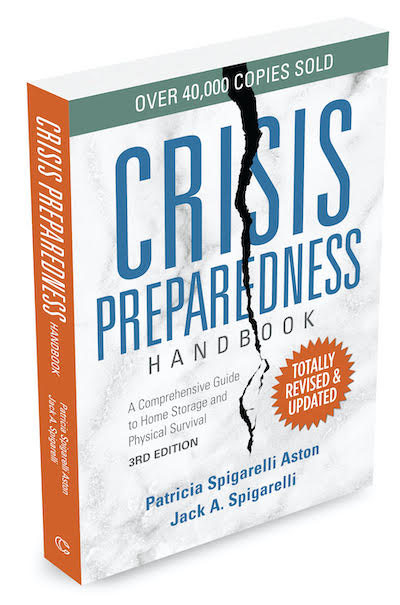
Learn more about preparing for a crisis or emergency in Crisis Preparedness Handbook, Third Edition (2020.) You will learn more about sanitation preparation for both short and long-term emergencies. In addition, learn about basic food storage, how to purify and store water, how to communicate when the grid is down, and other important preparedness topics. If you don’t already have a copy, you can find it here on my website CrisisPreparedness.com. Or, order it on Amazon in the Kindle version or hard copy version.
#emergencypreparedness #preparedness #crisispreparednesshandbook



1 thought on “Act Now! Don’t Wait to Solve the Problem of Sanitation!”
We use a 5 gallon bucket with a toilet seat, and another bucket of wood chips. Line the bucket with a large compostable bag. Use toilet as usual, cover deposit with a handful of wood chips. This will last a family for a few days. Wood chips cost $6/bale. Then we have a dedicated compost pile in the back yard made with 4 pallets tied together in a square, with a piece of heavy screen on top to keep out critters. My daughter and family used one of these all winter and maybe went through 2 bales of wood chips.